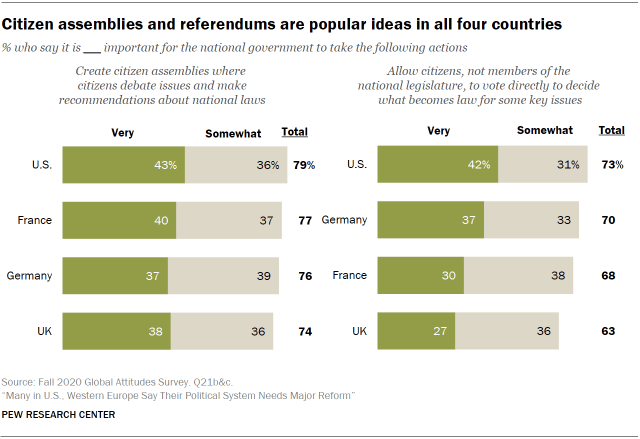Stefan Lehne at Carnegie Europe: “If the future of Europe is to be decided at the Conference on the Future of Europe, we should be extremely worried.
Clearly, this has been one of the least fortunate EU projects of recent years. Conceived by French President Emmanuel Macron in 2019 as a response to the rise of populism, the conference fell victim, first to the pandemic and then to institutional squabbling over who should lead it, resulting in a delay of an entire year.
The setup of the conference emerging from months of institutional infighting is strangely schizophrenic.
On the one hand, it offers a forum for interinstitutional negotiations, where representatives of the European Parliament demanding deeper integration will confront a number of governments staunchly opposed to transferring further powers to the EU.
On the other, the conference provides for an innovative experiment in citizens’ participation. A multilingual interactive website—futureu.europa.eu—offers citizens the opportunity to share and discuss ideas and to organize events. Citizens’ panels made up of randomly selected people from across the EU will discuss various policy areas and feed their findings into the debate of the conference’s plenary….
In the first three weeks 11,000 people participated in the digital platform, sharing more than 2,500 ideas on various aspects of the EU’s work.
A closer look reveals that many of the participants are engaged citizens and activists who use the website as just another format to propagate their demands. The platform thus offers a diverse and colorful discussion forum, but is unlikely to render a representative picture of the views of the average citizen.
This is precisely the objective of the citizens’ panels: an attempt to introduce an element of deliberative democracy into EU politics.
Deliberative assemblies have in recent decades become a prominent feature of democratic life in many countries. They work best at the local level, where participants understand each other well and are already roughly familiar with the issue at stake.
But they have also been employed at the national level, such as the citizens’ assembly preparing the referendum on abortion in Ireland or the citizens’ convention on climate in France.
The European Commission has rich experience, having held more than 1,800 citizens’ consultations, but apart from a single rather symbolic experiment in 2018, a genuine citizens’ panel based on sortition has never been attempted at the European level.
Deliberative democracy is all about initiating an open discussion, carefully weighing the evidence, and thus allowing convergence toward a broadly shared agreement. Given the language barriers and the highly diverse cultural background of European citizens, this is difficult to accomplish at the EU level.
Also, many of subject areas of the conference ranging from climate to economic and social policy are technically complex. It is clear that a great deal of expert advice and time will be necessary to enable citizens to engage in meaningful deliberation on these topics.
Unfortunately, the limited timeframe and the insufficient resources of the conference—financing depends on contributions from the institutions—make it doubtful that the citizens’ panels will be conducted in a sufficiently serious manner.
There is also—as is so often the case with citizens’ assemblies—the crucial question of the follow-up. In the case of the conference, the recommendations of the panels, together with the content of the digital platform and the outcome of events in the member states, will feed into the discussions of the plenary….(More)”

